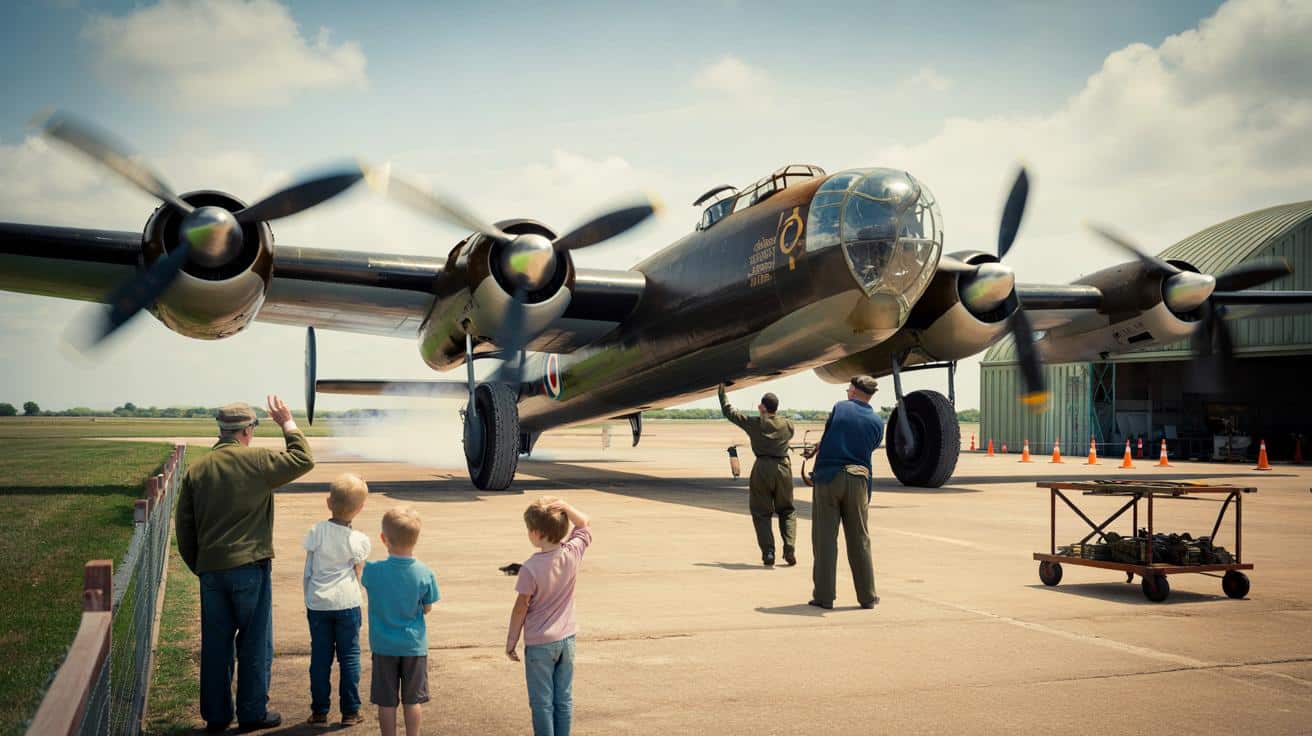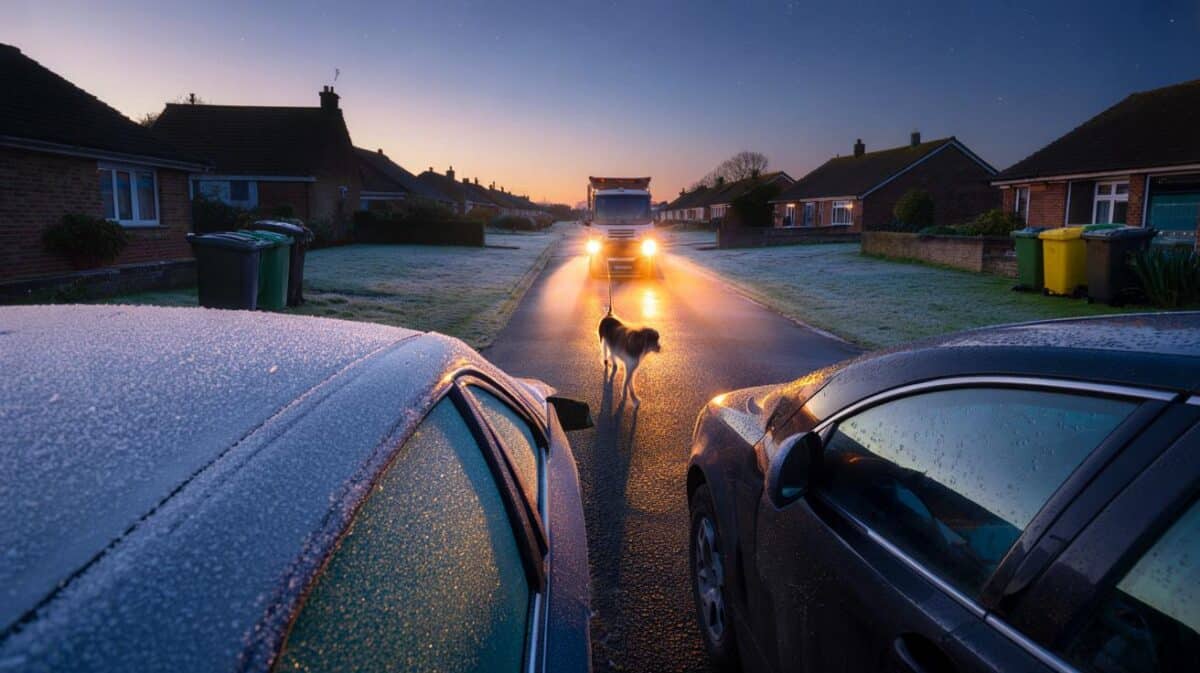It’s a rare moment where noise, memory, engineering and ceremony touch the same strip of tarmac. A 1940s giant touches down to be taken apart, healed, and readied for more years of flight and remembrance.
The wheels kissed the runway at Duxford with a light squeal, and the big Avro finally exhaled. The Merlins ticked as they cooled, that warm-metal crackle you feel as much as you hear, and the air smelt of hot oil and cut grass. Ground crew moved in quick and calm, palms on panels, chocks under tyres, as an older gentleman at the fence line lifted a hand without quite meaning to. Children leaned forward, mouths open. A woman in a flight jacket wiped at one eye, then laughed at herself. Someone started clapping. Someone else just stared up at the cockpit, the way you look at a veteran’s face. Then the real work began.
Why this landing matters now
There are fewer living links left each year. A Lancaster bomber landing for restoration signals that a country still invests in its memory with both hands and spanners. It also signals trust: trust that complex, old-metal engineering still has a home, and that the stories tied to those rivets will be told in a voice people want to hear. **This wasn’t a museum moment; it was a living, breathing return.**
We’ve all had that moment when something from our childhood suddenly looks smaller, or bigger, than we remember. The Lancaster pulls the opposite trick: it gets larger the closer you stand to it. Only two examples regularly fly worldwide, one with the RAF’s Battle of Britain Memorial Flight and one in Canada. Each landing carries decades of weight. An engineer told me they count success in millimetres and memories. You could see that in his hands, still stained from safety wire.
A restoration is less about repainting than proof. Proof that the airframe can still accept loads, that metal still behaves the way the drawings say it should, that every moving part still deserves to move. The Lancaster’s bones are aluminium and steel, but the rules are modern: non-destructive testing, ultrasound scans, borescope inspections, compliance paperwork so neat you could iron a shirt on it. The logic is simple. You can’t honour a legacy you can’t trust in the air. **A safe Lancaster is the only Lancaster that matters.**
Inside the overhaul: from first inspection to final run-up
Day one starts with photographs, tags and tape. Teams map every panel, every fastener, every cable, then remove parts in a strict order and log them like jewellery. Corrosion control comes early: skins are checked, ribs measured, spars examined for hidden fatigue that only appears under light and dye. *The quiet magic is in the tactile rituals — the knuckle tap on a panel, the fingertip read of a seam.* When a new part is needed, it’s machined to fit the airframe in front of them, not a perfect 3D model that never knew war or weather.
Visitors love the showy bits — engines hanging on hoists, props off, cowlings laid out like gleaming shields — but the craft lives in the slow corners. Watch how a tech fits a bush and breaks off the tang, or chalks a line that becomes a perfect row of rivets. Tiny mistakes are normal in a hangar, and that honesty keeps the aircraft honest too. Let’s be honest: nobody actually does this every day. The best crews learn, pause, and then do it better the second time.
“You don’t restore history,” a chief engineer told me, “you return it to service.” The line landed with the weight of a spanner on concrete.
“If a veteran can stand under the wing and feel safe, we’ve done our job. If a kid hears the start-up and grins, we’ve done it twice.”
- Look for pencil witness marks on freshly fitted parts — proof of care in alignment.
- Notice safety wire runs: neat, tidy twists show time taken and pride.
- Smell the hangar: a clean blend of fuel, dope, and cut alloy means order, not chaos.
- Ask about NDT reports; good teams will explain in plain language.
- Peep at the logbooks; dates and signatures tell their own story.
The people, the place, the long road ahead
Restoration seasons don’t run on calendars, they run on parts, budgets, and patience. Crews know that a single stubborn bolt can steal an afternoon, and a rare gasket can hold up a month. The public’s role is quiet but real: visiting, buying a patch, sharing a photo with a grandparent who once heard that sound before dawn. **Stories are the fuel that never runs dry.** The Lancaster that touched down will take off again, yes, but what lifts with it is bigger than an airframe — it’s a shared agreement that some things are worth the time it takes to do them right.
| Point clé | Détail | Intérêt pour le lecteur |
|---|---|---|
| Legend on the move | Lancaster lands at Duxford for deep restoration and compliance checks | Understand why the arrival is rare, and why it drew a crowd |
| How it’s done | Strip-down, NDT, corrosion control, part fabrication, meticulous reassembly | See the craft behind those dramatic runway moments |
| What’s next | Ground runs, taxi tests, flight checks, public displays when cleared | Know when to watch, visit, and support the next chapter |
FAQ :
- Where has the Lancaster gone for restoration?To a specialist hangar at Duxford, where experienced engineers handle major work for heritage aircraft, including deep inspections and structural tasks.
- How long will the restoration take?Think in seasons, not weeks. A thorough cycle often runs many months, with surprises and parts lead-times shaping the pace.
- Can the public visit during the work?Yes, on selected days. Hangar access varies by task and safety, but viewing windows and guided talks are planned across the programme.
- Will the aircraft fly again after this?That’s the aim. Once inspections, reassembly, ground runs and flight tests meet standards, the Lancaster returns to displays.
- How can I support the project?Visit, donate, buy from the shop, or share the story. Small actions stack up — and keep the Merlins singing.







